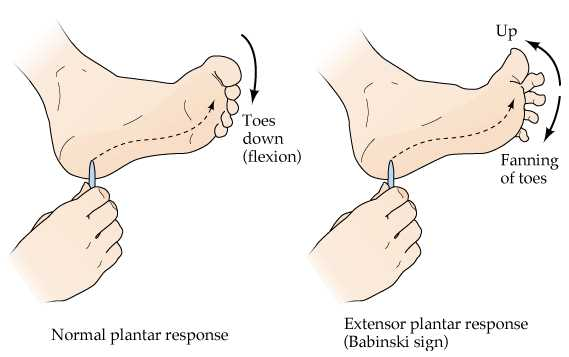The nurse is caring for a client who has prostate cancer. Which of the following manifestations does the nurse attribute to the advancing disease process?
Blood in the urine or semen
Anemia due to long-term bleeding
A dark-colored or elevated lesion
An enlarged liver or gallbladder
The Correct Answer is A
Choice A reason:
Blood in the urine (hematuria) or semen (hematospermia) can be a sign of advanced prostate cancer. This symptom occurs when the cancer affects the urinary or reproductive tracts, causing bleeding. It is a direct result of the tumor invading nearby tissues or structures.
Choice B reason:
While anemia can be associated with chronic diseases like cancer, it is not a direct manifestation of the advancing disease process of prostate cancer. Anemia in cancer patients is often multifactorial, including chronic inflammation, nutritional deficiencies, or treatment-related side effects.
Choice C reason:
A dark-colored or elevated lesion is not typically associated with prostate cancer. Such lesions are more commonly related to skin cancers or other dermatological conditions.
Choice D reason:
An enlarged liver or gallbladder can be a sign of metastasis in advanced cancer cases, including prostate cancer. However, it is less specific than blood in the urine or semen and can be caused by a variety of other conditions.
Nursing Test Bank
Naxlex Comprehensive Predictor Exams
Related Questions
Correct Answer is A
Explanation
Choice A reason:
Babinski's sign is a neurological reflex that's tested by stroking the sole of the foot. A positive Babinski's sign, which is normal in infants but abnormal in adults, is indicated by dorsiflexion of the great toe (the toe points up) while the other toes fan out. This reflex suggests dysfunction of the corticospinal tract, which may be due to various neurological conditions. In the context of a stuporous patient with an unrepaired femur fracture, a positive Babinski's sign could indicate an acute neurological change possibly related to the injury or a secondary complication such as a fat embolism syndrome, which can occur after fractures and may affect the brain.
Choice B reason:
Pronation of the arms is not associated with Babinski's sign. Pronation is a rotational movement where the hand and upper arm are turned inwards. While arm movements are part of the neurological examination, they do not constitute a response to the plantar reflex test used to elicit Babinski's sign.
Choice C reason:
Pinpoint pupils may indicate opioid overdose or damage to the pons due to various causes, but they are not a component of Babinski's sign. Pupil size and reaction to light are important in neurological assessments, but they are separate from the reflexes tested by the Babinski sign.
Choice D reason:
Jerking contractions of the head and neck are not related to Babinski's sign. These could be indicative of seizure activity or other neurological disorders but are not a response to the plantar reflex test.

Correct Answer is A
Explanation
Choice A reason:
Morphine is an opioid analgesic that can cause a decrease in gastrointestinal motility, leading to constipation and exacerbation of paralytic ileus, a condition where there is a cessation of peristalsis in the intestine. In the case of paralytic ileus, the intestinal contents cannot move, which can lead to bowel distention, pain, and further complications. Therefore, morphine is contraindicated in clients with paralytic ileus due to the risk of worsening the condition..
Choice B reason:
While morphine can suppress cough and provide some relief in respiratory conditions, it is not contraindicated in bronchitis pleurisy unless respiratory depression is present. However, caution is advised as morphine can cause respiratory depression and should be used carefully in patients with underlying respiratory disorders.
Choice C reason:
Morphine is often used in the management of acute myocardial infarction (MI) to relieve chest pain, reduce anxiety, and decrease the workload on the heart by lowering blood pressure and heart rate. It is not contraindicated in MI; in fact, it can be beneficial in managing the symptoms associated with MI.
Choice D reason:
Postoperative pain management following hip arthroplasty often includes opioids like morphine. Morphine is not contraindicated in this situation and can be used to control postoperative pain, provided that the patient's respiratory function is closely monitored
Whether you are a student looking to ace your exams or a practicing nurse seeking to enhance your expertise , our nursing education contents will empower you with the confidence and competence to make a difference in the lives of patients and become a respected leader in the healthcare field.
Visit Naxlex, invest in your future and unlock endless possibilities with our unparalleled nursing education contents today
Report Wrong Answer on the Current Question
Do you disagree with the answer? If yes, what is your expected answer? Explain.
Kindly be descriptive with the issue you are facing.
